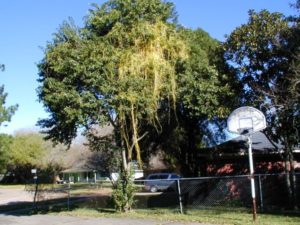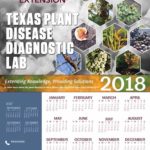 Dodder
Dodder
SCIENTIFIC NAME of causal agent: Cuscuta sp.
DISEASE DESCRIPTION:
Dodder is a term used to describe a parasitic plant in the genus Cuscuta. Dodder effects a wide range of host plants including broadleaf crops, ornamentals and weeds and some monocots. Cuscuta vines have a distinctive appearance of thin stems with small, indistinct leaves wrapping themselves around their host. Often in summer and early autumn, yellow vines will produce small fruit with the same color as the stem. Infected plants exhibit reduced vigor, growth, and crop yield.
BIOLOGY:
Cuscuta is a genus of obligate, non-species specific parasitic plants with about 170 species primarily found in temperate and tropical regions. Cuscuta infects its host by extracting photosynthates and water through haustorium penetration into the hosts tissue and vascular system. Cuscuta are very poor producers of chlorophyll, making them largely dependent on host plants for nutrients. Cuscuta begin their life cycle as seeds, germinating on or near the surface of the soil during warmer seasons. Cuscuta grows as a rootless, threadlike stem in the direction of a viable host using thigmotrophic and chemosensory guidance. The seedling can produce only minor levels of chlorophyll requiring them to find a suitable host within 3-5 days before dying. After establishing itself on a host, Cuscuta will disassociate with the soil and live entirely on its host. Host interaction initiates the production of a haustorium which penetrates the host tissue and differentiates in the host xylem and phloem. Cuscuta can spread by growing onto nearby plants or through seed production in their fruit.
MANAGEMENT METHODS:
Avoidance and prevention are the most cost-efficient methods to control dodder infestation. Equipment should be thoroughly cleaned after use in dodder infected field. Cuscuta are most common spread through commercial means by incorporation into crop seed supply. Management of infestation can be as simple as manual removal of Cuscuta from plants when infection is confined to small areas. However, Cuscuta seeds can remain viable in the ground for over 20 years. It is best to remove Cuscuta quickly before vines begin to produce seeds. Alternative approaches require the use of selective herbicide. Preemergence herbicides have been effective in reducing early Cuscuta growth and decreasing host establishment. Pronamide is a benzamide herbicide that has shown to be successful in control Cuscuta in alfalfa when applied prior to emergence. Post emergence methods involve using contact herbicides, such as paraquat or diquat, on both Cuscuta and host.
RESOURCE LINKS:
https://plantdiseasehandbook.tamu.edu/problems-treatments/problems-affecting-multiple-crops/dodder/
https://uvalde.tamu.edu/herbarium/forbs-common-name-index/dodder/
This factsheet is authored by Brendan Mormile (PhD student)

Dr. Appel’s 2017 Fall PLPA601 students
Factsheet information for the plant health issues represented by the images on the 2018 TPDDL calendar were written by graduate students enrolled in the Department of Plant Pathology & Microbiology PLPA601 Introductory Plant Pathology course in the 2017 Fall semester (course instructor: Dr. David Appel). This exercise provides an opportunity for a high impact learning activity where the students are tasked with producing an informational output directed to the general public and to provide opportunity for the students to write.
